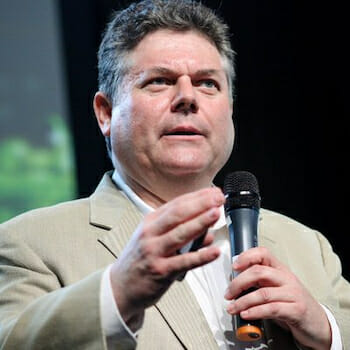
Mozambique Looks to the World Bank to Boost Growth
Despite sustained economic growth since 2005, rural poverty in Mozambique persists. Low agricultural productivity, particularly in the northern and central provinces, is exacerbated by poor physical connectivity, including limited access to agricultural extension services, credit markets, and market information.
Limited transport infrastructure means that economic activity is effectively segmented into the north, south, and central parts of the country creating conditions for regional price swings that are not smoothed by integrated trade.
A new initiative, the Integrated Feeder Roads Project (IFRDP), is being financed by the World Bank. It focuses on the rehabilitation and maintenance of tertiary roads, with a large percentage of the investments targeting the construction and repair of bridges and culverts to improve accessibility, particularly during periods of heavy rain or flooding. The IFRDP will utilise $185 million to rehabilitate and upgrade existing roads in four key provinces: Sofala, Manica, Tete, and Zambezia.
Damage from cyclones and flooding
Mozambique suffers from exposure to extreme rainfall and flooding that may become even more frequent due to global climate change. Its geography and long coastline, coupled with changing land-use patterns and the impact of climate change, mean that it is regularly affected by extreme weather events.
Catastrophic flooding occurs almost annually during the rainy season and is largely influenced by the La Niña weather system and the Intertropical Convergence Zone. Climate change projections indicate that rainfall patterns may become less certain for the country as a whole and vary by region. Since 1960, the proportion of days with heavy rainfall events have increased by 2.6% per decade or an estimated 25 days per year in total.
In 2019, Cyclone Idai damaged or destroyed an estimated 240,000 homes while Cyclone Kenneth damaged or destroyed an additional 50,000. Cyclone Idai alone caused an estimated $115 million in damage to the private sector. Prior to those devastating events, floods in 2015 affected 326,000 people, killed 140, and caused damage estimated at $371 million in parts of Zambezia, Nampula, and Niassa. The road and rail networks have suffered extensive damage over the last 20 years, with substantial sums being diverted from network improvement to the repair of flood-related damage.
These disruptions isolate communities for extended periods of time. Following Idai and Kenneth, the United Nations, World Bank, and the European Union, in partnership with the government, conducted a Post-Disaster Needs Assessment (PDNA).
The PDNA process documented the severe damage and loss from the recent events. It identified over $3 billion worth of damages, with the road sector needing an estimated half a billion dollars. In the central region, about 1,962 km of roads, 90 culverts, 15 bridges, and 24 drifts were damaged, resulting in widespread impassability. This situation resulted in the reduction of transit by about 7% for the national network.
Enhancing road access
This new project is focused, in part, on resolving the economic losses which result from such disruption. The analysis assessed flood risks based on two levels: flood likelihood under various climate change scenarios; and the vulnerability of bridges, culverts, and road surfaces. The project’s core objective is to enhance road access in rural areas in support of the livelihoods of local communities and to enable immediate responses by road in crises and emergencies.
It is hoped that the project will give a boost to Mozambique at a time when it is also being buffeted by the effects of the pandemic, which has further damaged the country’s economic prospects. The pandemic is heavily impacting economic activity as social distancing and travel restrictions affect demand for goods and services. At the same time, low prices for commodities are slowing the pace of investment in the energy sector.
Mozambique is expected to experience a growth rate of 1.5% in 2021. The country is also expected to experience large external and fiscal financing gaps in 2021.
Daunting challenges
The country’s twin challenges are daunting: maintaining macroeconomic stability considering exposure to commodity price fluctuations; and reestablishing confidence through improved economic governance and increased transparency, including navigating the aftermath of a hidden debt scandal. Structural reforms are needed in support of the struggling private sector.
The political reality on the ground is not helping matters. The Front for the Liberation of Mozambique (FRELIMO) and the Mozambican National Resistance (RENAMO) remain the country’s main political forces. RENAMO maintained a considerable arsenal and military bases after the peace accord of 1992 that ended the civil war, and the country has registered flare-ups of armed confrontations and violence ever since.
A new peace accord was reached in August 2019, but it has been violated several times by a RENAMO breakaway military faction. The new deal is aimed at integrating RENAMO fighters into the national army, and dismantling RENAMO military bases.
Meanwhile, the government is grappling with an Islamist insurgency in parts of the gas-rich province of Cabo Delgado. Initially confined to one locality, the killing of civilians by the insurgents has now spread to other districts and towns inside the province. Recent estimates show the conflict has killed more than 1,000 people and forced 100,000 from their homes.
An additional major challenge is diversifying the economy. The strategy is to move away from the current focus on capital-intensive projects and low-productivity subsistence agriculture, but that will require huge infrastructure spending.
Meanwhile, the work is focused on strengthening the key drivers of inclusion, such as improved quality education and health service delivery, which could in turn improve social indicators. Improving connectivity and boosting the decrepit transport network will be just one step on an even longer road to regaining national prosperity.

